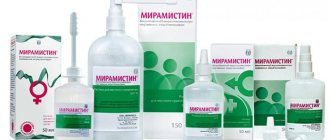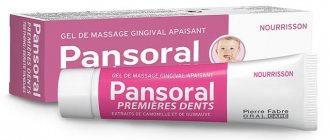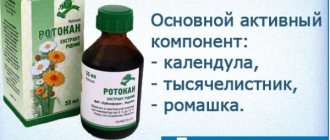27.11.2019
In addition to specially developed drugs for the treatment of inflammatory gum diseases, products that are available in every home can be used. For example, hydrogen peroxide helps eliminate the inflammatory process, improve blood supply to the gums, and stimulate the consumption of oxygen by cells.
Gum treatment
Each tooth is surrounded by soft tissue. They carefully protect its vulnerable spots from bacteria, the mechanical effects of food and acidity surges. The collection of these tissues around each tooth is called the gum.
- The oral cavity is a huge house in which teeth “live”.
- Each tooth has its own “apartment” - the gums.
A person feels better in a well-kept and renovated apartment. Let's make an analogy: teeth need healthy gums.
Let’s figure out what you need to be wary of and what to do if your fears become reality. Let's talk about the health of our gums.
implant surgeon, orthopedist, therapist, work experience: 12 years
The most common mistakes when dealing with symptoms of bleeding gums:
- stop brushing your teeth;
- use antiseptic rinses, gels and toothpastes (without consulting a specialist).
Such actions will only temporarily stop the symptoms, but will not prevent the recurrence of the disease.
Treatment methods for bleeding gums are aimed at stopping and stopping the development of chronic inflammation. Treatment is carried out depending on the severity of inflammation.
Dental
If you experience symptoms of bleeding gums, you should immediately contact your dentist who:
- will carry out diagnostics to identify the cause of inflammation;
- will perform ultrasonic teeth cleaning (for gingivitis) or curettage and treatment of periodontal canals (for periodontitis);
- will prescribe anti-inflammatory therapy, which lasts about 10 days. Treatment includes antiseptic rinsing with chlorhexidine solution and rinses of varying concentrations (depending on the degree of inflammation). Then a special gel is applied to the edge of the dry gum from the front of the dentition;
- will monitor the patient's condition after prescribing a course of treatment. Symptoms disappear within a few weeks and treatment can be stopped.
At home
For mild or moderate inflammation, treatment at home with folk remedies is possible.
A solution of sea salt or soda.
Salt water helps eliminate bleeding, pain, and also restores and strengthens gum tissue. To make a rinse solution, dissolve a tablespoon of salt or a teaspoon of soda in a glass of boiled water. You need to rinse your mouth three times a day for a week.
Herbal decoctions.
Such components can be found in any pharmacy. To rinse, you will need a solution of 2 tablespoons (1 filter bag) of raw material brewed in 500 ml of boiling water. The frequency of rinsing is carried out up to three times a day for a week. Decoctions of flowers (chamomile, calendula, yarrow) disinfect and relieve pain from inflammation and related diseases. A decoction of oak bark helps stop gum bleeding.
Hydrogen peroxide solution (disinfectant to stop bleeding).
This remedy is used to stop bleeding and whiten teeth. To make the solution, dilute one tablespoon of peroxide (concentration no more than 3%) with 200 ml of boiled water. You need to rinse your mouth three times a day for about five minutes for a week (the solution should not be swallowed). This product removes plaque and improves gum health.
Mechanism of action of the active substance
Hydrogen peroxide has been used in all areas of medicine for over 200 years. Many doctors prescribe its use at home to restore gums and oral mucosa.
Patients seeking to achieve shiny teeth use this substance without prescription. This attitude can lead to dangerous consequences.
To better understand how peroxide affects teeth and prevent negative reactions, familiarize yourself with the properties of this substance.
- Peroxide is known for its antiseptic effect. Contrary to popular belief, it can have the exact opposite effect, increasing the healing time of damage. This happens due to the use of high concentration liquid, which is very dangerous and can cause considerable harm. When using hydrogen peroxide under the supervision of a doctor, healing of the gums and mucous membranes will occur in an extremely short time.
- Interacting with components contained in living tissue, peroxide foams strongly. This property is useful for softening and exfoliating dead areas, suppuration and blood clots. Treating the mouth and gums with this liquid makes it easier to eliminate inflammation.
- Peroxide can be used to clean any stained teeth. The liquid oxidizes foreign substances that accumulate on the enamel, which allows you to remove them without much effort. This is the essence of the whitening effect of hydrogen peroxide.
Indications and contraindications
Hydrogen peroxide is a cheap, effective remedy for a number of diseases. It is used in therapy:
- periodontal disease;
- stomatitis;
- fungal infections of the mucous membrane and gums;
- plaque on the tongue;
- bad breath.
But keep in mind that peroxide is not a universal remedy for all diseases and it has contraindications. Rinses and compresses cannot be used for:
- advanced deep caries;
- a large number of fillings;
- advanced stages of periodontitis, accompanied by increased bleeding of the gums;
- violations of the integrity of tooth enamel.
Regular use of peroxide does a good job of brightening tooth enamel.
The substance should also not be used by children under 12 years of age. If you doubt the advisability of hydrogen peroxide therapy specifically in your case, we recommend that you first consult with your doctor.
Prevention
Teeth should not be allowed to be “lazy”, so chewing food should be vigorous, and the food itself should be quite tough (include plant foods in the diet). Thus, a natural massage of the gums is carried out, and their cells are renewed faster. You can also massage your gums with circular movements of your thumb, and rinse your mouth with warm water before eating.
Visits to the dentist should be regular, otherwise it is extremely difficult to save teeth in advanced forms of periodontitis.
What to do if you have periodontal disease:
- Maintain oral hygiene
- Identify the true cause of periodontal disease (general or local causes)
- Stop smoking
- Change your diet (exclude sweet foods and include plant foods.)
Solution
Medicines with antiseptic and anti-inflammatory properties can quickly relieve gum inflammation at home. In addition to them, you can also use traditional medicine.
Dental gels and rinses
Medicines for gum inflammation can be divided into 4 categories:
- Gels and solutions based on chlorhexidine. The use of these drugs for rinsing or applying to the mucous membrane can eliminate pain and prevent the development of periodontitis.
- Rinse solutions based on furatsilin, chlorophyll, medicinal plants - rotokan, stomatophyte, chlorophyllipt.
- Special dental gels enriched with anti-inflammatory components, such as propolis, will also help relieve gum inflammation.
Dental gels are more effective in the oral cavity. Unlike oil-based ointments, they are better absorbed and stay on the mucous membrane longer.
Here are the most effective gels for relieving inflammation and swelling of the gums.
Cholisal
is a two-component dental gel used for the prevention and treatment of gingivitis, stomatitis and periodontitis. Helps relieve swelling and inflammation of the gums and effectively relieves pain in the problem area. The anesthetic effect of the drug lasts up to 8 hours.
Application:
20 minutes before meals 2-3 times a day.
Metrogyl denta
– antimicrobial gel based on metronidazole and chlorhexidine. It has an anti-inflammatory and powerful antiseptic effect against a wide range of microorganisms - causative agents of gingivitis and periodontitis. Analogs of the drug Dentamet, Asepta.
Application:
2-3 times a day for 7-10 days. The gel is applied to the problem area 30 minutes before meals.
Gengigel
– a preparation based on hyaluronic acid. Restores damaged gum tissue, covers the mucous membrane with a protective film, and increases local immunity of the oral cavity. Prescribed for all diseases of periodontal tissue.
Application:
3-5 days until the symptoms of gum inflammation disappear. Used as part of complex therapy.
For the best effect, before applying the dental gel, brush your teeth, rinse your mouth with mouthwash or saline solution, wipe and dry your gums with a gauze pad.
To prevent inflammatory diseases of the oral cavity, it is recommended to use fluoride-containing toothpastes and rinses.
Traditional medicine
In combination with medications, mouth rinses can reduce pain and swelling:
- Saline or soda solution. To prepare the solution, it is recommended to add a teaspoon of sea or regular table salt (or baking soda) to a glass of warm water. Rinse your mouth with the resulting solution once every few hours.
- Herbal solutions. Decoctions of oak bark, sage, chamomile and mint are ideal for relieving gum inflammation.
How to brew the solution:
2 tablespoons of dried oak bark or other phyto-raw materials are poured into 200 ml of water and the solution is heated in a water bath for 20-30 minutes. After this, the infusion is filtered and boiled water is added to a volume of 200 ml.
How to rinse:
for a few minutes, every hour or two. After rinsing, it is recommended not to eat or drink anything for 30 minutes.
For inflammation of the gums it is also recommended:
- eat flaxseed oil, fish oil and other products containing unsaturated acids;
- use a solution of hydrogen peroxide and essential oils with an antibacterial effect.
It is better to treat gum inflammation with folk remedies after consultation with a doctor and use folk remedies as an auxiliary therapy.
Ointment
Ointments have become widespread in the fight against periodontal disease. They can improve blood flow in the gums, have a healing effect and help preserve teeth.
Heparin ointment
It has the property of thinning the blood at the site of application, thereby improving microcirculation in blood vessels and metabolism in tissues. A small amount of ointment is rubbed into the affected gums twice a day. The course of treatment is 14 days.
Solcoseryl
Solcoseryl ointment has a powerful restorative effect, improves the absorption of oxygen and glucose by tissues. For periodontal disease, the drug is applied to the gums with massage movements for 2-3 minutes. Therapy is carried out until symptoms disappear completely.
Levomekol
Levomekol contains antibacterial and wound-healing components that promote faster restoration of periodontal tissues and eliminate symptoms of inflammation. Levomekol is used as an ointment for gums against periodontal disease in advanced cases. It is applied as an application on a sterile gauze pad to the affected area twice a day. The duration of use depends on the clinical manifestations and continues until the condition improves.
Indications for rinsing
Some diseases of the mucous membranes of the mouth, gums and teeth can be easily treated with these affordable remedies. And in combination they give an even faster and better effect.
Diseases of the mucous membranes and gums
Rinsing the mouth with baking soda and hydrogen peroxide is indicated for diseases such as:
periodontal disease;
- gingivitis;
- stomatitis;
- periodontitis;
- other gum diseases.
To carry out the procedure, you can use a solution of both substances or of each of them separately. The result is achieved in both the first and second cases.
Both soda and hydrogen peroxide have disinfecting properties and the ability to kill many germs and bacteria. It is these properties that allow them to quickly cope with diseases of the mucous membranes of the mouth.
Dental diseases
Tested by many generations and proven to be effective in treating teeth, as well as in teeth whitening.
Rinsing teeth with peroxide solution is used to prevent caries and bad breath. It is great for additional cleansing of the oral cavity. Rinsing with soda solution can reduce pain and inflammation in case of dental cyst formation. This rinsing is also recommended for the treatment of caries.
Medication approach
If characteristic symptoms are identified, you should contact a qualified specialist. Diagnosis of periodontal disease is based on radiographic examination (detection of the degree of damage to bone tissue) and a simple dental examination (observation of external manifestations).
It is absolutely impossible to ignore uncharacteristic bad breath, bleeding from the gums, purulent formations and mobility of teeth, because the result can be very disastrous. Along with the root cause of periodontal disease, it is necessary to pay special attention to the treatment of external signs of manifestation. To do this, resort to the following methods:
- Massage the gums (blood flow improves).
- Physiotherapy (improving the supply of nutrients and oxygen).
- Surgical treatment (aimed at tissue restoration).
- Acupuncture (relief of painful symptoms).
Other recipes with hydrogen peroxide for periodontal disease
You can add soda or lemon to the peroxide. According to reviews, treating periodontal disease at home with hydrogen peroxide will be much more effective if you combine it with other ingredients.
For example, rinsing with sea salt and peroxide will help relieve inflammation. For this, 1 tsp is enough. Dilute both in a glass of warm water, and then rinse in the usual way. Herbal infusions are also used to treat and prevent gum disease. In this case, infusions of oak bark, sage, St. John's wort and plantain are suitable. Add 5-10 drops of peroxide to the prepared broth and rinse your gums with it. It is necessary to add peroxide to the glass immediately before the procedure, when the herb has infused for the allotted time and the decoction itself becomes less hot.
With soda
Hydrogen peroxide and soda are one of the popular methods for treating periodontal disease at home. To prepare the solution you will need dry peroxide, and it is better to use sea salt. If it is coarsely ground, make sure that it is completely dissolved in the water. Under no circumstances should the prepared solution be swallowed.
Ingredients:
- Dry peroxide - 2 tablets.
- Salt - 1 tsp.
- Water - 200 ml.
How to prepare : Mix all ingredients.
How to use : Rinse your mouth with the resulting solution 3-4 times a day. The duration of the procedure is 5 minutes. The course of therapy is 1 month.
Result : Washes away pathogenic microorganisms from the surface of the gums, stops bleeding, promotes the regeneration of soft tissues.
With lemon
At home, periodontal disease can be treated with hydrogen peroxide, baking soda and lemon. This product can replace toothpaste. You should not do this regularly - for prevention purposes, one procedure every 7-10 days is enough.
Ingredients:
- Baking soda - 3 g.
- Lemon juice - 10 drops.
- 3% hydrogen peroxide - 20 drops.
How to prepare: Add fresh citrus juice to the soda and stir thoroughly. Then add peroxide.
How to use : Brush your teeth with the resulting mixture; no need to rinse your mouth. After the procedure, you should not eat or drink for at least 15 minutes.
Result : Heals gums, promotes periodontal regeneration.
Basic oral intake
On the first day, every eight hours, dissolve 1 drop of the drug in 50 ml of filtered water and drink immediately. You should observe a half-hour interval before meals or use the product an hour and a half after finishing the meal.
Increase the serving by 1 drop daily. When it reaches 10 drops, take a three-day break. Then the dose does not change, amounting to 10 drops. Neumyvakin recommends alternating three days of use with a break of the same length.
If heaviness, pain or other discomfort occurs, the dose is reduced. Vitamin C intake is recommended.
Advice one. Whiten your teeth with hydrogen peroxide.
Do not under any circumstances try to restore the whiteness of your smile using this aggressive chemical composition! Yes, statements that compounds based on hydrogen peroxide are actively used in dentistry are indeed justified. But in the doctor's office you will receive a carefully selected dosage of a special mixture, where peroxide does not occupy a primary place. At best, when using peroxide at home, you will not get any results at all. In the worst case, you will burn your oral cavity, damage the enamel, and for a long time you will get rid of the consequences of your own indiscretion.
Vacuum cleaning of wounds
Vacuum therapy or negative pressure therapy is a method of removing serous fluid and dead tissue from a wound or surgical site. Currently, vacuum ulcer debridement can be used on all types of wounds: acute, subacute or chronic. It reduces swelling, promotes rapid healing and the formation of young connective tissue.
The essence of the method is that a piece of porous sponge with silver ions is inserted into the wound, then the whole thing is covered with a transparent membrane. A hole is made in it and a drainage tube is inserted, which is connected to a vacuum source. The fluid is drawn from the wound through the sponge into a reservoir for subsequent disposal.
The membrane prevents air from entering and allows a vacuum to form inside the wound, reducing its volume and making it easier to remove fluid. Before starting the procedure, the ulcer should be washed.
The duration of treatment depends on the size and depth of the wound. The dressing is changed every 24-48 hours.











